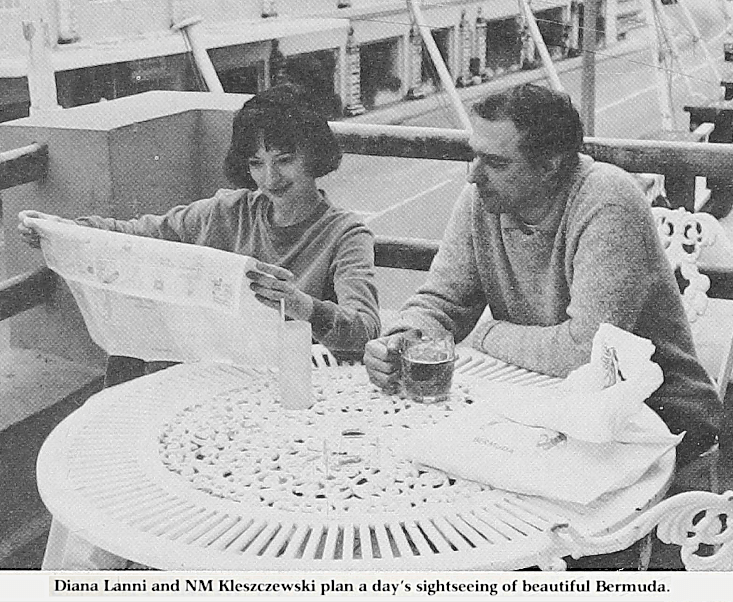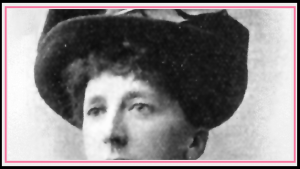
Beth Harmon, the isoLanni?
Thanks to the critically acclaimed and insanely popular Netflix series, The Queen's Gambit, based upon Walter Tevis' 1983 book of the same title, Beth Harmon has become a household name.
In interviews Tevis talked about his own troubled childhood and later struggles with alcohol addiction. These things no doubt flavored his characterization of Beth Harmon. However, all good fiction writers draw not only from their own limited personal world but also from that expansive universe within which their little world exists. Some of these inspirations are deliberate, some are subliminal but most certainly any fictional character is the product of many sources and influences.

During the early 1980s when this book was conceived and written, Tevis, no stranger to chess, lived in the Village and in the course of his research, frequented Washington Square Park and Stuart Morden's Game Room in the basement of the Hotel Beacon at the corner of 75th and Broadway. This was 10 years after Bobby Fischer won the World Championship and the chess boom he created in the U.S. had petered out leaving the aficionados other things to talk about.
During that time in NYC, one of the more gossipy topics concerned the young woman who had made a name for herself by playing in the U.S. Women's Championship in 1979 and 1981 and who was selected to participate in the Olympiad in Lucerne in 1982 where she drew with the Romanian WGM Elisabeta Polihroniade and Soviet Women's Champion GM Nona Gaprindashvili. At this time she was the 2nd highest rated woman in the US (tied with Rachael Crotto, behind Diane Savereide). The gossipy part involved her history of drug and alcohol addiction which had gotten so bad she had a mental breakdown and admitted herself into Bellevue Hospital.
The young woman was Diana Lanni and her story was no secret in New York in the early 80s. Diana became a well known chess figure and a sought-out opponent in the city when Tevis was gathering his material. She frequented the Game Room, owned and operated by Tevis' go-to man, Stuart Morden with whom she was also acquainted, as well as the outdoor tables at Washington Square Park. Tevis was undoubtedly quite aware of Diana, her childhood, her problems and her obvious talent. In a world populated almost entirely of men, a woman stands out.
"Beth leaned over the table, digging her fists into
her cheeks, and tried to penetrate the position." Lucerne, 1982
Lucerne, 1982
There are other similarities between Diana Lanni and Beth Harmon. Some of these are incidental but some defy that random colliding of events we call coincidence.
We know that Tevis frequented Washington Square Park where Diana played regularly and stood out as the only strong female player. Long before playing in the U.S. Women's Championship , Diana had fled her home in Washington D.C. with chess master Larry Kaufman who was relocating to Miami. As with Harry Beltik and Beth Harmon, Kaufman and Lanni shared a lasting relationship with chess at its core. Larry and Harry both gave up chess to pursue other avenues though Kaufman later returned to the game, eventually becoming a GM.
Diana's first exposure to chess was at age 5 when she started attending tournaments with her father who was an expert. Beth first found chess at age 8 by watching the janitor of the orphanage, William Shaibel, who became her father figure as well as her chess mentor. Both their chess careers began in humble, unlikely locations: Beth's in the fictional Methuen Home in Mount Sterling, Ky and Diana's in Silver Spring, MD, just north of D.C., where she says she stumbled into a chess club during a low point in her life. Both women went on a long life-altering binge.
Chess provided a much needed focal point and a sense of empowerment for Beth and Diana both of whom were trapped in situations beyond their control. Strangely enough, both were as fascinated with the beauty of chess as they were with winning.
Beth's encounter with the reporter from Life magazine:
“Chess isn’t always ‘competitive,’” she said.
“But you play to win.”
Beth wanted to say something about how beautiful chess was sometimes, but she looked at Miss Balke’s sharp, inquiring face and couldn’t find the words for it.
Diana Lanni quoted in Sports Illustrated, April 1985:
Says Manhattan's Diana Lanni, the 13th-ranked U.S. woman, "Chess is pretty, creative, aesthetic and artistic—all things women are supposed to be interested in."
In spite of their recognition of chess as art, both Diana and Beth were fierce competitors who played aggressively and despised losing. They were both obsessed with the game, devoting all their time and energy to developing their craft. Beth, of course, goes on to beat the World Champion in a tournament game. Diana gave up chess after being defrauded of her fairly earned national master title.
Of course fiction doesn't depict real life but rather life as it exists in the author's imagination. Diana Lanni was a champion, winning the women's division of both the Marshall and the Manhattan chess clubs. The successes of Beth Harmon, presented as a female Bobby Fischer, were greater. She won the U.S. Championship, U.S. Open as well as an exclusive invitational tournament in Moscow with everything pointing towards even greater future accomplishments.
Diana recalls being told at the time that she was the inspiration for Tevis' book. The parallels and the timing indicate this could very well be the case.
The final and most satisfying similarity between Beth and Diana is that both conquered their demons, achieving that elusive sense of self-worth and joy in living.
 Bermuda Open, 1985
Bermuda Open, 1985
Below is a game between Diana Lanni and Monique Ruck-Petit at the 1982 Olympiad in Lucerne, Switzerland. Ruck-Petit had won both the French and Swiss women's title in 1979 and would win the bronze individual medal at Thessalonik, Greece in 1984
Although it's been over 40 years since she played in her first U.S. Women's Championship, Diana Lanni is currently a member of chess.com under the name LanaCaprini.
Two time U.S. Women's Champion, Jennifer Shahade interviewed Diana Lanni on this very subject, something you definitely don't want to miss.
Her podcast can be found HERE.






